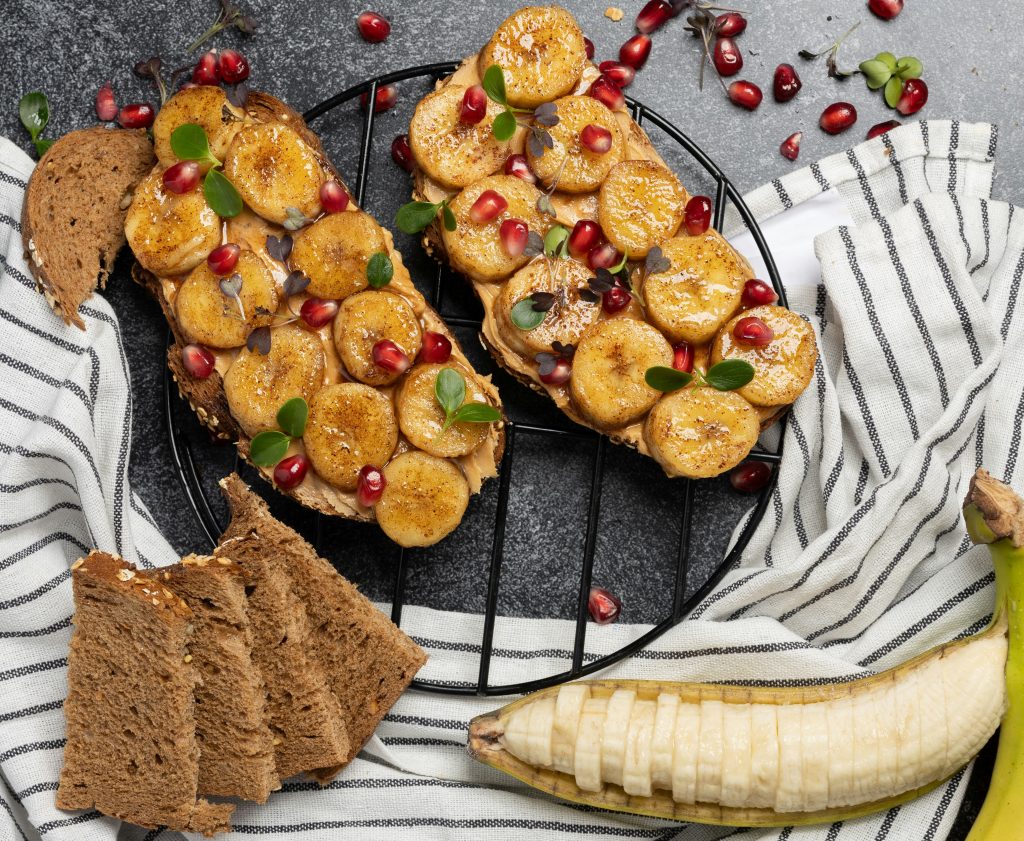
Race day is not the time to “see what happens” with food. Your body runs on stored carbs (glycogen), some fat, and fluids. Get it wrong and you’ll be shuffling, cramping, or stuck in those blue potty-pods. Get it right and you’ll feel steady, strong, and ready to race.
3–4 Days Before — Load the Tank
If you’re running long (half, full, ultra), it’s time to fill up the glycogen stores. That’s carb loading — and no, it doesn’t mean pizza and cake parties. How much you need depends on how many days you give yourself: if you load for 3–4 days, aim for 6–8 g carbs per kg bodyweight daily from rice, pasta, oats, bread, potatoes. Only loading for 1–2 days? Then you’ll need more, around 8–10 g/kg (up to 12 if your stomach can handle it) to get the same effect. Keep protein and fat normal, and fiber low enough that your gut doesn’t rebel. Why bother? Muscles store ~300–700 g glycogen. Normal eating refills in ~24 h, but strategic loading can push stores 20–40% higher — delaying the wall in races longer than 90 min. Short race (<1 h)? A normal dinner and breakfast is plenty.
Night Before — Last Top-Up
Keep it familiar, carb-heavy, and easy to digest. White rice with chicken, or pasta with tomato sauce. Salt it a bit more to help hold fluids. If you’ve been loading, eat 1–2 g carbs/kg. If not, aim for 3–4 g/kg. Skip anything greasy, creamy, or risky for your stomach.
Race Morning (2–3 Hours Before)
Go carb-heavy, low fiber, low fat, moderate protein. 1–4 g carbs/kg works for most. Porridge with banana, toast with honey, or a bagel with jam are solid. Sip 400–600 ml water or electrolytes.
During the Race
If your race is under an hour, just hydrate and go. For anything longer, take one gel (~25 g carbs) about 30 minutes before the start with some water. Then begin fueling around 30 minutes into the race and keep going every 20–30 minutes. Target 30–60 g carbs per hour (up to 90 g if you’ve trained your gut). Elite athletes even go up to 120g but only after training months/years for it. Mix glucose + fructose in a ~2:1 ratio (that’s how most gels/sports drinks are designed).
Hydrating 100–200 ml every 15–20 min is more than enough. If aid stations are every ~3 km, you don’t need to carry a flask unless you know you’ll panic without it.
Caffeine is another performance booster — 3–6 mg/kg bodyweight spread across the race can lower perceived effort and help you keep pace. Coffee before the start counts, so plan your gels accordingly if they’re caffeinated.
After the Race (0–30 Minutes)
Refill with 1–1.2 g carbs/kg plus 20–25 g protein. Chocolate milk, a shake, or a sandwich works. Replace electrolytes, especially if it was hot.
Example: Half Marathon (~7:00 min/km, ~2h20–2h30) with PowerBar Gels (26 g carbs, 2:1 ratio, 51 mg caffeine in some):
- 30 min before start: 1 gel (26 g carbs, no caffeine) + 200 ml water.
- During race:
- 0:30 h → 1 gel (no caffeine)
- 1:00 h → 1 gel (caffeine, 26 g carbs + 51 mg caffeine)
- 1:30 h → 1 gel (no caffeine)
- 2:00 h → 1 gel (caffeine, 26 g carbs + 51 mg caffeine)
That’s ~5 gels total (130 g carbs = ~52 g/hour) with ~100 mg caffeine during the race (on top of any coffee you had before).
If this is your first race, don’t stress about hitting every gram perfectly. Honestly, just eating a carb-heavy dinner the night before, a light breakfast on race morning, and taking a gel every 30–40 minutes already puts you way ahead of the game. And one golden rule: practice fueling in training. Your stomach is a muscle too — it needs to learn what works for you before race day.
Fueling Gear I Use & Recommend (you should still try them out first):
(Affiliate disclaimer: Links marked with * are affiliate links. If you buy through them, I may earn a small commission at no extra cost to you. Thanks for supporting Move&Meet!)
- Energy Gels: Powerbar – PowerGel Fruit – with or without caffeine available, not too hard on the stomach.
- Electrolytes: sanotact Elektrolyte Plus – light taste, not too expensive.
- High Carb Bar: Powerbar – Energize Original * – for long runs when gels alone aren’t enough.

Schreibe einen Kommentar